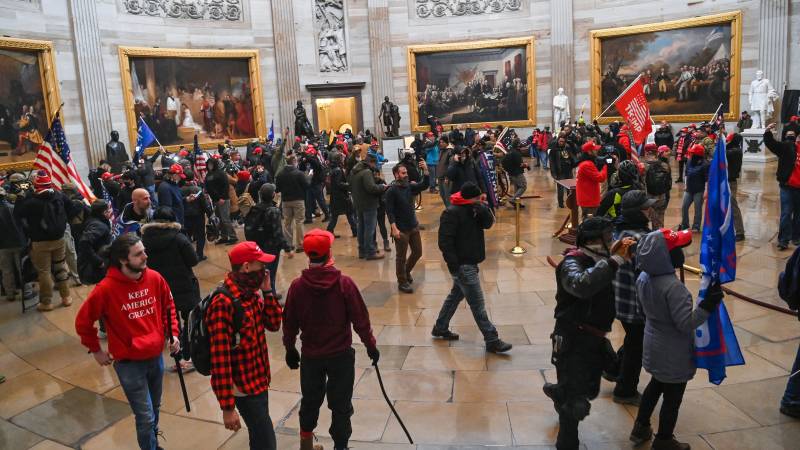No doubt many young people across the country are finding this moment extremely scary. Parents, caregivers and teachers can help children cope.
Help children make sense of the news
Teachers such as Urbach and organizations around the country turned out a vast range of classroom resources, literally overnight, to address students' questions and feelings. Many of those resources include images, tweets and memes, and give guidance for talking about the role of white supremacy in Wednesday's violence.
By Thursday morning, there were guides from the education nonprofit Facing History and Ourselves, PBS NewsHour Extra and the New York City Department of Education. The Center for Research on Learning and Teaching, at the University of Michigan, shared a guide for discussing difficult or high-stakes topics. Michigan State University education professor Alyssa Dunn collected social justice and trauma-informed tips for teachers.
For those struggling with talking to the youngest children, Martha Bishop, who teaches kindergarten outside Tucson, Ariz., shared this with NPR on social media:
"I think I'd probably tell them that today some people threw big naughty grownup temper tantrums because they didn't like how the vote for president turned out. They did this instead of using their words and it was a little scary, just like it can be scary when you see another kid (or sibling?) throw a BIG temper tantrum. They were loud and interrupted our leaders while they were doing important work. But helpers stopped them and our leaders got to do their jobs!"
As NPR has reported, there's evidence that talking about helpers can make a difference in how kids see their world.
Calm anxiety
What's notable about this crisis is that so many children were at home where they could watch it unfold in real time, with no check on the dosage of news, says Melinda Macht-Greenberg, a clinical, developmental and school psychologist in the Boston area. She says we should think about "modeling for kids how to be able to manage the questions, the worries, the anxiety as they are emerging, and to be preparing them for some of the things that might happen next that they might be worried about."
She says to watch for changes in eating, sleeping, emotional volatility or clinginess in kids. Take breaks from the news. And keep inviting them to talk, even if they don't seem to want to take in what's happening.
Psychologist Reena Patel says her toolbox for calm with children and teenagers includes breathing exercises, visualizations and positive affirmations, such as "I can do this." She also encourages parents "coming up with ways that we can teach children to compartmentalize some of their worries and stress and anxiety." Like writing them down, or setting aside a certain time of day to talk about them.
Remember, Macht-Greenberg says, this is not a "one and done" situation. We don't have to get these conversations with our children perfect on the first try. We need strategies for the long haul, because we're likely to continue in a moment of "drawn-out," low-grade anxiety between now and the inauguration.
Copyright 2021 NPR. To see more, visit https://www.npr.org.
9(MDAxOTAwOTE4MDEyMTkxMDAzNjczZDljZA004))



9(MDAxOTAwOTE4MDEyMTkxMDAzNjczZDljZA004))